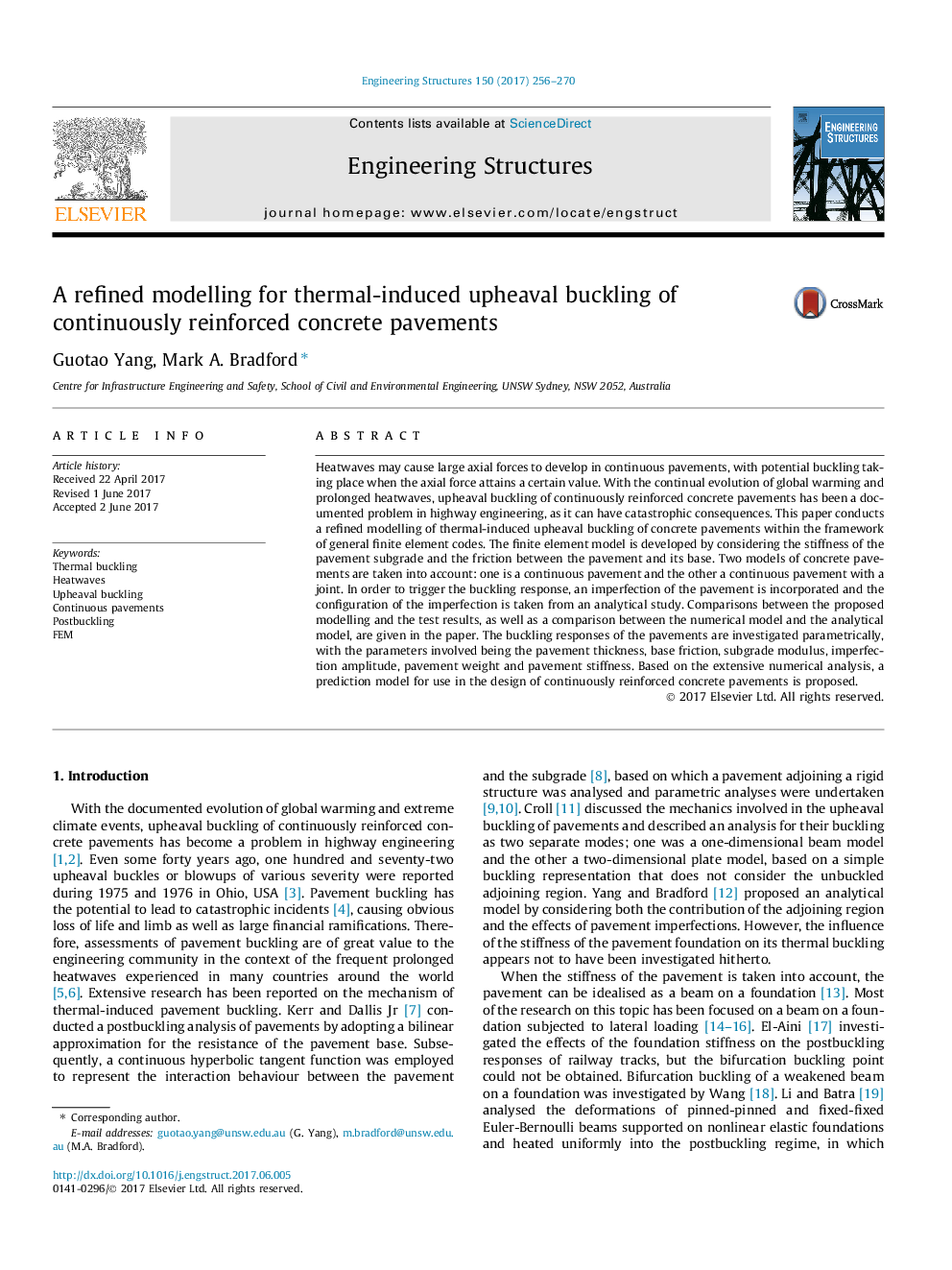| Article ID | Journal | Published Year | Pages | File Type |
|---|---|---|---|---|
| 4919832 | Engineering Structures | 2017 | 15 Pages |
Abstract
Heatwaves may cause large axial forces to develop in continuous pavements, with potential buckling taking place when the axial force attains a certain value. With the continual evolution of global warming and prolonged heatwaves, upheaval buckling of continuously reinforced concrete pavements has been a documented problem in highway engineering, as it can have catastrophic consequences. This paper conducts a refined modelling of thermal-induced upheaval buckling of concrete pavements within the framework of general finite element codes. The finite element model is developed by considering the stiffness of the pavement subgrade and the friction between the pavement and its base. Two models of concrete pavements are taken into account: one is a continuous pavement and the other a continuous pavement with a joint. In order to trigger the buckling response, an imperfection of the pavement is incorporated and the configuration of the imperfection is taken from an analytical study. Comparisons between the proposed modelling and the test results, as well as a comparison between the numerical model and the analytical model, are given in the paper. The buckling responses of the pavements are investigated parametrically, with the parameters involved being the pavement thickness, base friction, subgrade modulus, imperfection amplitude, pavement weight and pavement stiffness. Based on the extensive numerical analysis, a prediction model for use in the design of continuously reinforced concrete pavements is proposed.
Related Topics
Physical Sciences and Engineering
Earth and Planetary Sciences
Geotechnical Engineering and Engineering Geology
Authors
Guotao Yang, Mark A. Bradford,
